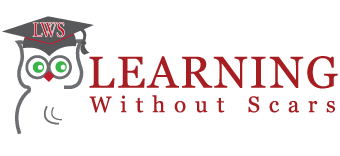Out on a Ledge

In this week’s guest blog, Sonya Law takes us Out on a Ledge with a look at the end of the year performance review.
How to jumpstart the EOY Performance Review to drive high performance in 2021? Out on a ledge … is how it can feel like sometimes for employees walking into their end of year review… It’s a mixed bag of dread and discomfort which only serves to weigh you down. These negative feelings brought about by fear from past experiences where managers have got it wrong by using it as an opportunity to dredge up past mistakes for the first time. Or worse they gloss it over and this indifference only serves to strengthen a performance culture of mediocrity and completely devalues the review.
As a Human Resources Manager, I feel like this is a missed opportunity to re-connect and re-engage the effort and performance of your employees leading into 2021. After all, aren’t we all striving to create High Performance Cultures?
As managers we are really good at ‘what went well’ but often fail in asking employees what are our biggest challenges and what needs fixing. Instead, we wait to ask the employee who has resigned in the exit interview, when it’s too late. Organizations that facilitate honest, open dialogue will solve problems faster and improve overall innovation and performance against rivals. Our ability to reflect on the year, our performance and grow together as human being’s and as an organization is a comparative advantage in Business.
So how do we conduct a good EOY review and what is it worth to the organization?
The three key success factors of a good EOY review are approachability, attention, appreciation.
Approachability: your manager is open and communicative in the review, in his or her language both verbal and non-verbal, this congruency builds integrity in the relationship and review.
Attention: the greatest gift, they give their employee their 100% attention. That is, they don’t answer phone calls or send emails, they have committed to this time, they don’t re-schedule or put it off. This is a big no-no rescheduling an EOY performance review! Where practical always commit to this meeting, it sends a bad message to the employee if you shift it, they feel deprioritised.
‘People want to feel heard, listened to’
Simon Sinek – virtual event – 24th November, 2020 – The Infinite Game.
When you do this well morale goes up, trust goes up they feel you have their back and it reduces fear and if you show care and exercise your empathetic listening skills your people will even be willing to suffer stress for you.
Encourage your employees to come to the meeting with what they see are the challenges and what needs fixing. Resist the temptation as a manager to fix it for them, by giving them the responsibility it activates thinking. Ask them what do you think? How would you solve it? Managers tell people what to do; but true leaders help people feel safe, promote thinking and drive a culture of Empowerment, where employees are empowered to make decisions impacting their work. You can take this a step further and if you here the language of blame, for example they ordered the wrong part, simply replace they with we ordered the wrong part. It’s a subtle way to encourage teamwork and accountability. To read more about this see Book titled: “Turn the Ship Around” by David Marquet, former nuclear submarine commander.
Appreciation – As the manager it is your role to show appreciation to your employee for their valuable contribution over the year. You would be surprised how many managers fail to do this, and only tick the box – did they achieve goal – yes or no. My top tip to get into the role of an appreciative manager, is to imagine that your star performer is walking out of their EOY review into a call with a ‘headhunter’ following your meeting! What do you want your star performer to say when the headhunter dangles the carrot and tries to poach your star performer? You want them to walk out of the EOY review feeling inflated like a balloon filled with all the warm and fuzzy feelings that make us feel giddy when we are in love! Think about it like your most important relationship, reconnect, reengage them in the cause, vision, purpose, mission and the important role they have in that, we all want to feel connected and sense of belonging.
How do you prepare for this EOY review with your employee?
- Create an Appreciation folder in your Outlook for your employee.
- Collect things – throughout the year – note all the good things they do.
- Drop any emails into that folder – things you write yourself to remind you of the good things or emails you get from customers, suppliers or colleagues about how fantastic your star performer is, achievements etc.
Top 3 things to remember:
- All your employees are star performers
- You hired them or someone else in your organization did so and its up to you to make sure they fulfill their potential
- If they are a poor performer why did they make it to the EOY performance review – that’s a bigger organizational culture question, which would require some deep work.
So, what’s it worth to you?
If you don’t get this right – Instead of putting a STAR on top of the Christmas Tree this year you will be putting a job vacancy up online to look for a new STAR performer.
An EOY review is a great opportunity to unite your people in the cause so they are bursting with new energy heading into 2021, ready to face new challenges, refreshed and reinvigorated.
For more information on our classes and assessments, please visit us at Learning Without Scars.






